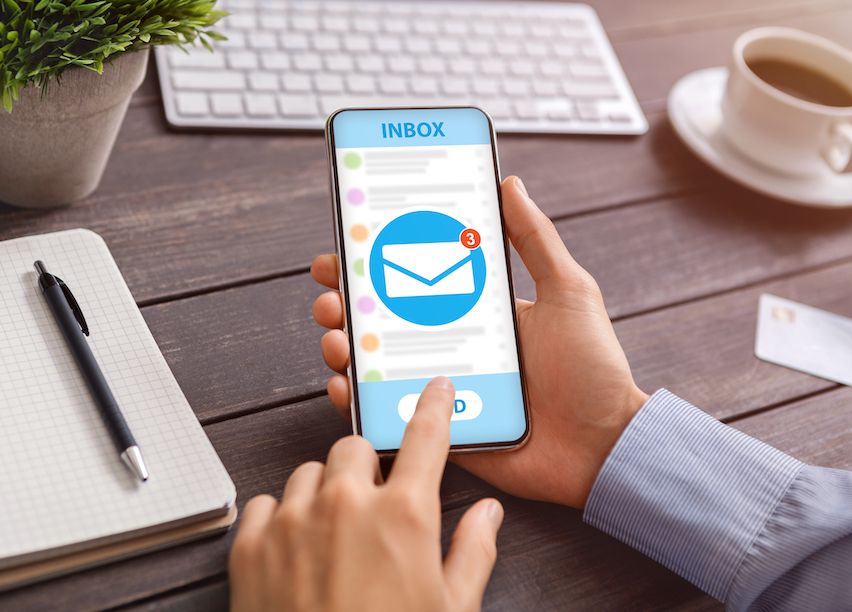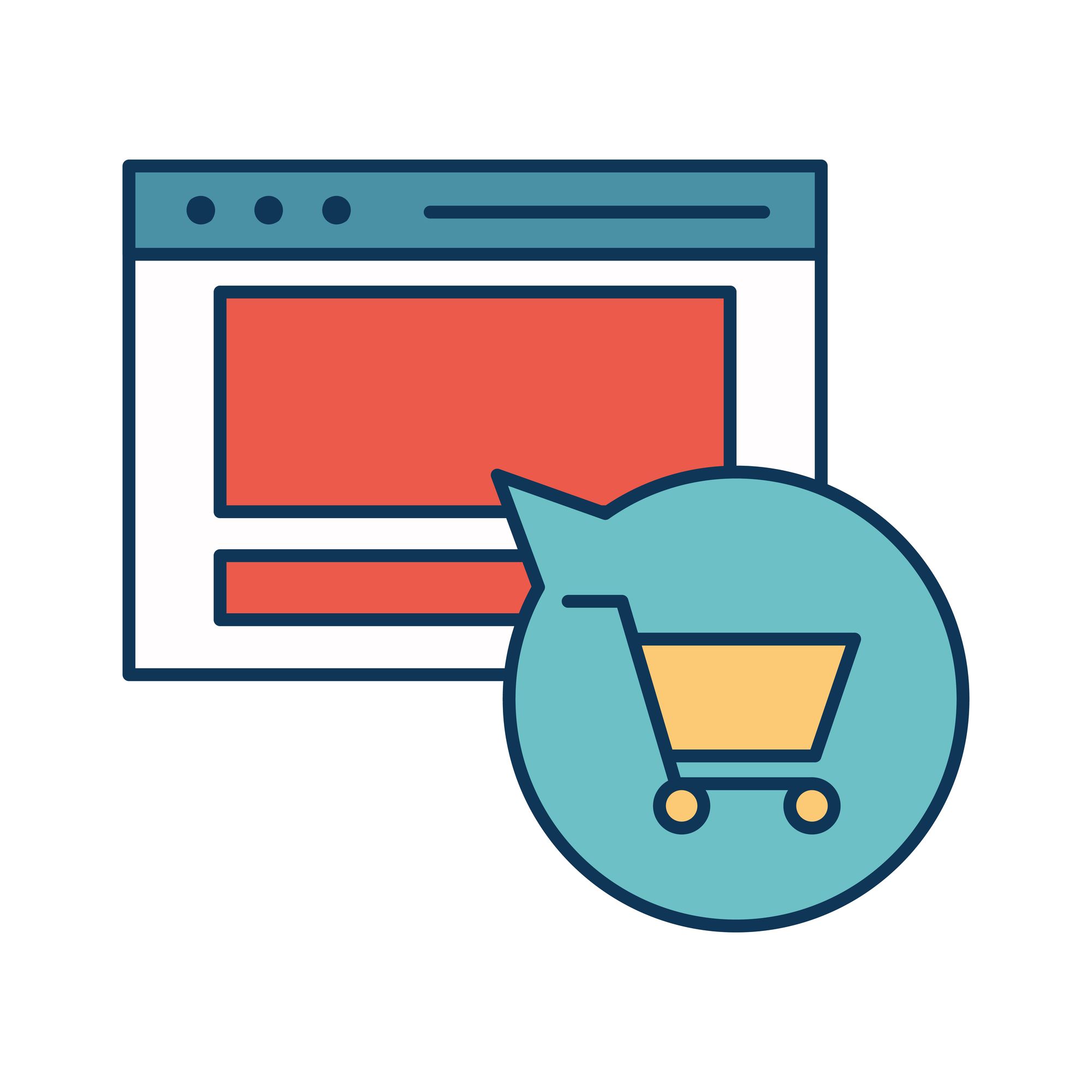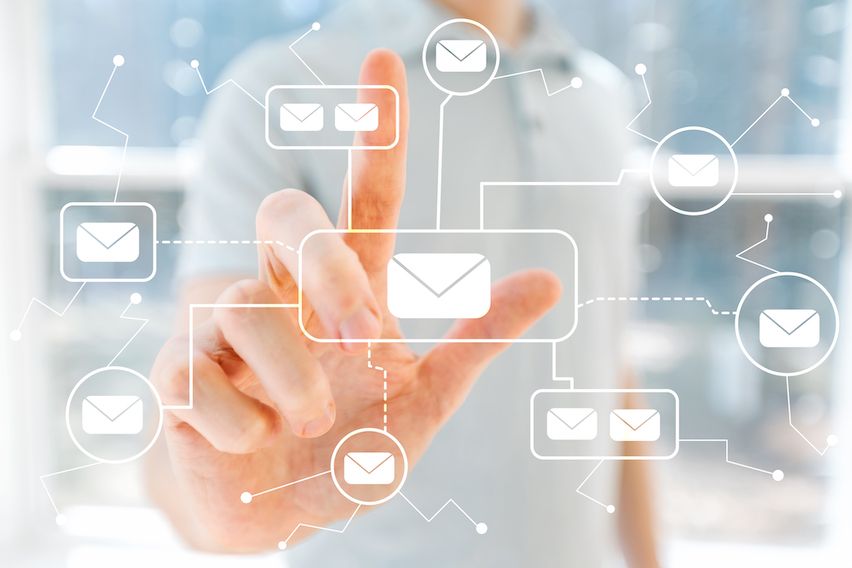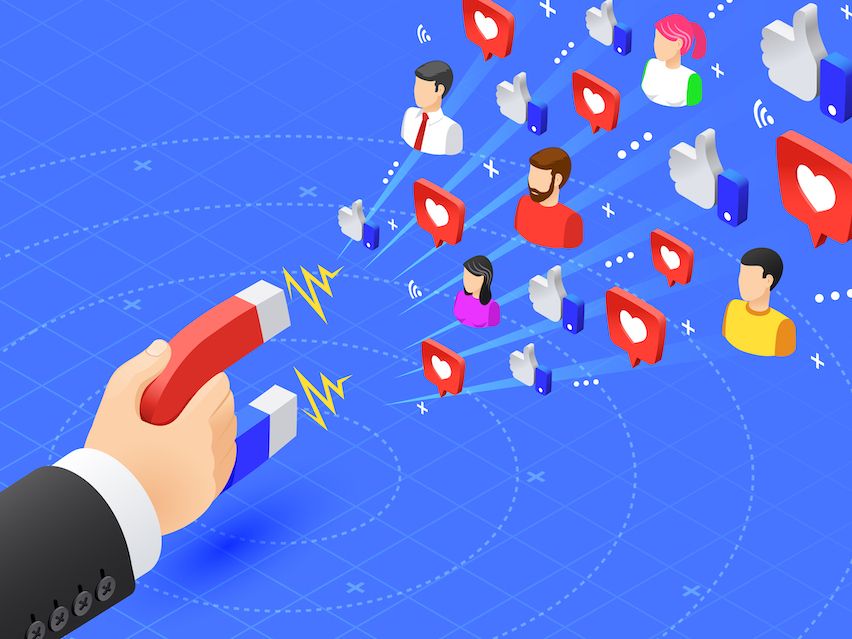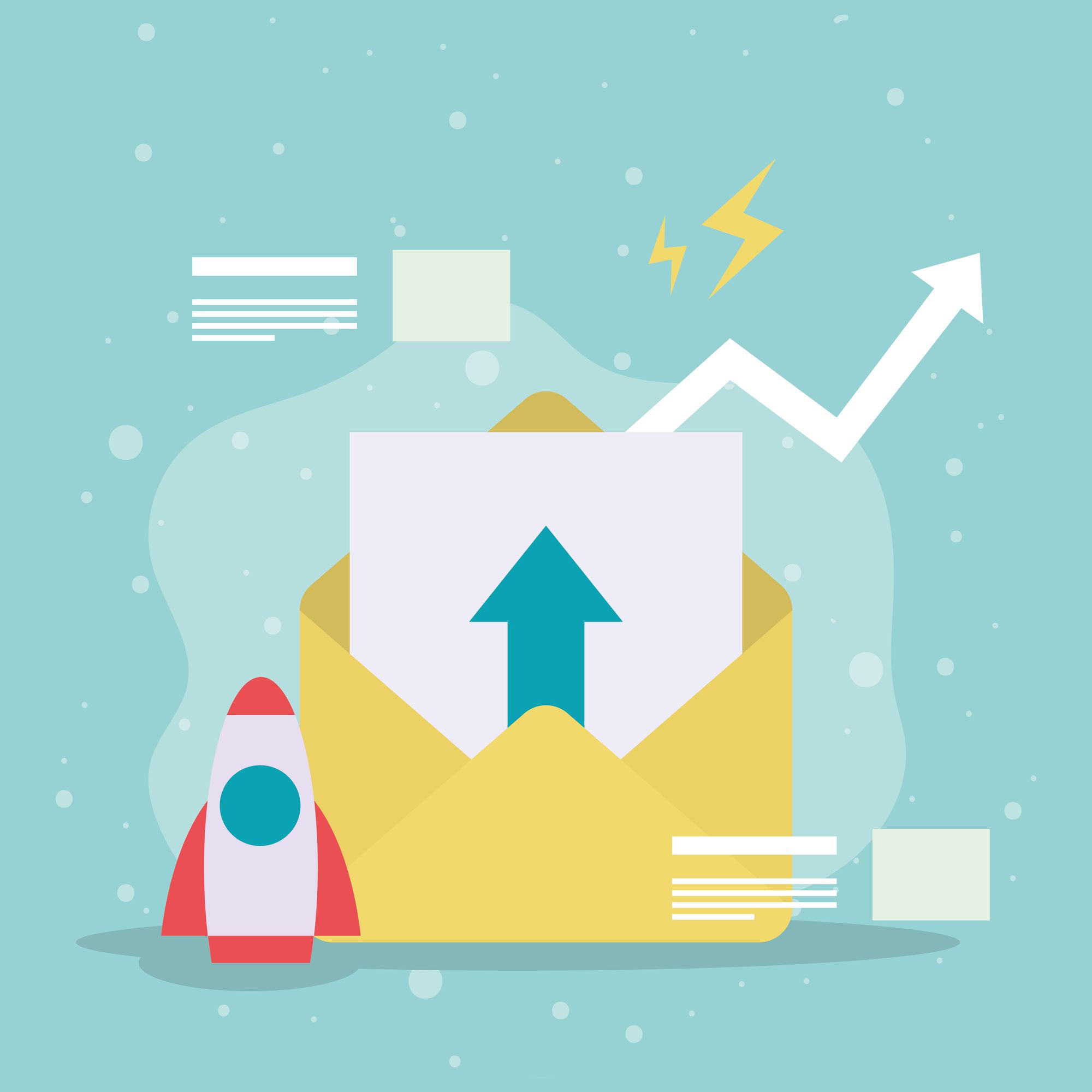Contents
the email tool that makes email marketing simple
What Is a Newsletter Campaign in Email Marketing?
Published: January 3, 2025
Newsletter campaigns are a vital part of email marketing. They help businesses connect with people and grow. Using different methods, these campaigns engage customers and promote brands.
Getting Started with Newsletter Campaigns
A newsletter campaign is a series of emails sent to a select group of people. It's a part of email marketing. In email marketing, businesses use emails to connect with their customers and potential customers. The goal is to inform, engage, and sometimes sell.
Every marketing campaign has a purpose. It could be to share news about products, give tips, or tell about special offers. These campaigns are planned. They are not just random emails. They are sent to people who have chosen to receive them. This is what makes them different and effective.
Email marketing campaigns need a strategy. This means thinking about who will read the emails, what they like, and what you want them to do after reading. Do you want them to buy something, visit your website, or just know more about your brand? Your strategy decides this.
Once an email marketing campaign has begun, it's important to measure its success. How many people opened your email? How many clicked on a link? Did they buy something after reading? These important questions help you understand if your email campaign worked or not.
Effective email marketing campaigns are powerful tools that can help you reach many people at once. They can make your customers feel valued and keep them interested in your brand. Nurture them and they can help grow your business.
Types of Newsletter Campaigns
Understanding different types of campaigns is key to email marketing. Here's an overview of each type
Welcome and onboarding series
Welcome and onboarding emails are the first emails new subscribers receive. They introduce your brand and set the tone for future communications. Key elements include a warm welcome message, a brief introduction to your company, and what subscribers can expect from your emails.
Promotional email campaigns
Promotional emails are centered on highlighting specific products or services, often featuring special offers or discounts. They are direct and action-oriented, aiming to drive sales. Timing and audience segmentation are crucial for their effectiveness.
Seasonal email campaigns
Tied to holidays or significant events, these campaigns leverage the seasonal context to promote relevant products or offers. Major shopping events like Black Friday and Cyber Monday are prime examples. They're particularly effective for tapping into the collective mood and purchasing behavior of your audience during these widely recognized retail holidays, as well as other seasonal events.
Behavior-triggered email series
These emails are sent based on specific actions taken by subscribers, like visiting a certain page on your website or abandoning a shopping cart. These emails are highly personalized and timely, increasing the chances of engagement.
Post-purchase drip
These communications are aimed at enhancing customer experience after a purchase. They might include product usage tips, requests for reviews, or cross-selling suggestions. These emails help in building long-term customer relationships.
Social media integration emails
These mails encourage your email subscribers to connect with your brand on social media, increasing your touchpoints with them and building a more engaged community.
Regular newsletters
Sent on a regular schedule, newsletter emails contain updates, news, tips, examples of how the product can be used, or educational content. They keep your audience informed and engaged with your brand between purchases.
Abandoned cart emails
Such emails target customers who added products to their cart but left them abandoned without purchasing. They often include reminders of what was in the cart, persuasive messages, or special offers to encourage the successful completion of the purchase. Turn abandonment to your advantage!
Re-engagement or win-back campaigns
These are often referred to as re-engagement emails. They target subscribers who haven't interacted with your emails for a while. The goal of these campaigns is to recapture their interest. This is often achieved through special offers, updates, or surveys asking for feedback.
Each type of email campaign has its unique strategy and goals. By understanding and effectively implementing these different types, businesses can engage their audience more meaningfully and drive various email marketing objectives.
Creating a Newsletter Campaign
Launching an email marketing campaign is a step towards deepening your connection with your audience and enhancing your email marketing impact. While we've touched on the importance of strategy in earlier sections, let's delve deeper into the practical steps of crafting your first email marketing campaign.
Crafting your first campaign
When setting out to create your first email campaign, it’s important to begin with a strategy. This strategy forms the backbone of your campaign, guiding every decision from content creation to audience engagement.
Refine Your Strategy
This is where you translate your broad email marketing goals into specific objectives for your newsletter. Whether you aim to drive sales, educate your audience, or build brand loyalty, your strategy should clearly define what success will look like for your campaign.
Deep Dive into Audience Understanding
We previously mentioned the importance of knowing your audience. Here, you'll need to go a step further. Analyze your audience's behavior, preferences, and engagement patterns. Use this data to segment your audience, tailoring your messages to different groups based on their interests and interactions with your brand.
List Building with a Purpose
Building your email list is more than just collecting addresses. It's about attracting subscribers who are genuinely interested in what you offer. Use targeted sign-up incentives, create engaging landing pages, and always prioritize ethical practices when growing your list.
Email Content and Design
Create content that resonates with your audience, utilizing a well-designed email template for consistency and brand alignment. This goes beyond promotional material to include valuable information, tips, stories, or insights relevant to your subscribers. Your email design should be visually appealing, reflecting your brand identity, and optimized for both desktop and mobile viewing.
Subject Lines That Grab Attention
The subject of your email is often your first and sometimes only opportunity to capture your reader's interest. Develop email subjects that are intriguing, brief, clear, and aligned with the content of your email. Avoid misleading headlines that might lead to disappointment and unsubscribes.
Scheduling for Maximum Impact
Timing can significantly affect the success of your campaign. Research the best times to send emails to your specific audience and consider factors like time zones, work schedules, and typical email-checking times.
Measuring and Adapting
Once your campaign is live, closely monitor its performance. Track open rates, click-through rates, and conversions to evaluate your campaign's effectiveness. Use these insights to adapt and refine your approach for future campaigns.
Designing engaging newsletter content
Interesting, original content in a newsletter is key to capturing your audience's attention. It’s about creating a mix of information and relevance that resonates with your readers. Think about what makes your audience tick. What information will they find valuable, entertaining, or enlightening? Your content should be a blend of these elements.
Crafting a narrative in your newsletter makes it more than just a broadcast; it turns it into a story. Share success stories, behind-the-scenes insights, or thought leadership pieces. These stories make complex information more digestible and keep your audience engaged.
The tone and language you use should mirror your audience's preferences. If your readers are professionals in a specific field, industry jargon is appropriate. For a broader audience, simple, more generic language works best. The key is to write with empathy – understanding and addressing your readers' questions and interests.
Your subject line acts as a gateway to your content. It should be compelling enough to prompt an opening but clear enough to set the right expectations. Testing different styles can help you understand what resonates with your audience. Some may prefer straightforward, informative headlines, while others might be drawn to creative or personalized ones.
Your newsletter's visual appeal also plays a significant role. A clean, well-organized layout with a touch of brand colors can make your newsletter pleasing to the eye and easy to navigate. Remember, many readers will view your email on mobile devices, so a mobile-friendly design is a must.
Don’t forget the call-to-action (CTA). It guides your readers on what to do next – be it reading a blog post, exploring a new product, or availing an offer. A clear, conspicuous CTA is crucial for transforming reader engagement into action.
Lastly, consistency in your newsletter – in terms of content, tone, and design – builds familiarity and trust. When your audience knows what to expect from your emails, they’re more likely to engage with them regularly. This consistency is what can set your newsletter apart in a crowded inbox.
By focusing on these elements, you can create a newsletter that not only informs and entertains but also deeply connects with your audience and encourages active engagement with your brand.
The Role of Email Campaigns in Marketing
Campaigns are a crucial part of a wider strategy. They're not just standalone email marketing tools; they're integral to building brand awareness and customer engagement.
Integrating campaigns into your marketing strategy
Newsletters help tell your brand's story and reach your goals. For instance, if your goal is to make more people aware of your brand, your newsletters can share stories and insights about what you do. This helps people connect with your brand on a deeper level.
It's important that your newsletter feels like a part of your brand. The writing style and things you talk about should match your website and social media. This helps people recognize and trust your brand no matter where they see it.
You know your audience best. Use what you know to make your newsletters interesting to them. Sometimes, you might even change your newsletter a little to suit different groups. This ensures everyone gets something they like and find useful.
Checking how your newsletter is doing is crucial. It's vital to know if your newsletter drives website traffic or is helping you to sell more. This information helps you improve your newsletters over time.
Newsletters also support your other marketing work. They can help get more people to read your blog or attend your events. This makes your overall marketing stronger and more effective.
Adding newsletters to your marketing in this way is an essential method of talking to your customers and building brand awareness. It's all about making stronger connections with the people you want to reach.
Measuring the impact of email marketing campaigns
Measuring your campaigns' effect is about looking at how they perform and what that means for your business. It's more than just counting how many people opened your emails. It's about understanding how your newsletter helps your business goals. Here's what to look at:
-
Open rate. This tells you how many people are opening the emails you send. A high open rate means your subject lines are working well and your audience is interested in what you have to say. If it's low, it might be time to try new subject lines or review when you send your emails.
-
Click-through rates. These show you how many people are engaging with the content of your email. Are they clicking on the links you provide? Are they exploring what you're sharing? High click-through rates usually mean your content is relevant and interesting to your audience.
-
Fit. Another important thing to consider is how your campaigns fit into your overall email marketing strategy. Are they helping you get more visits to your website? Are they leading to more sales or sign-ups? These are signs of a successful campaign. They show that your newsletters are not just being read, but they're also driving action.
Measuring the impact of your campaigns is an ongoing process. It's about regularly checking how they're doing and using what you learn to make them better. This way, each newsletter you send out can be more effective than the last, helping you build stronger connections with your audience and achieve your business goals.
Enhancing Your Email Campaigns
Improving your campaigns is like tending a garden. It's not just about planting the seeds; it's about nurturing them, adapting to changes in the environment, and watching them grow and flourish over time.
Make small, meaningful upgrades. The process starts with ongoing email improvement. Every newsletter you send is an opportunity to improve. Look at what worked well before and what didn't. Maybe certain topics get more attention, or perhaps a specific layout leads to more clicks. It's about evolution, not revolution.
Campaign optimization is another crucial aspect. This involves fine-tuning the various elements of your newsletter. It could be the timing of your emails, the way you segment your audience, or how you personalize your content. The goal is to make your newsletters as relevant and engaging as possible.
Keep at it. Remember, successful email marketing is not a one-time achievement; it's an ongoing journey. Your audience's preferences might change, new trends might emerge, and your business goals might evolve. Your campaigns should adapt to these changes. Keep testing new ideas, formats, and types of content. This will keep your newsletters fresh and your audience interested and engaged.
Connection is key. Lastly, consider your email newsletters as a vital part of your relationship with your customers. They are a direct line of communication and, when done right, can strengthen the bond you have with your audience. Ask for feedback, encourage replies, and engage in conversations. The more you connect with your audience, the more effective your newsletters will be.
By continuously enhancing your campaigns, you ensure that they remain an effective tool for your business, helping you to reach and deeply engage with your audience.
Enhancing campaigns with segmentation and personalization
Effective campaigns hinge on understanding and catering to the diverse interests of your audience. Segmentation and personalization are the tools that transform your newsletters from generic broadcasts to messages that resonate on a personal level.
Tailoring your newsletter content
Segmentation is all about organizing your email list into different groups. This isn’t just about demographics; it's about behavior and preferences too. For instance, you might segment your list into new customers, regular buyers, and those who haven’t purchased in a while. This approach allows you to tailor your content to fit each group's unique needs and interests.
Personalization goes beyond addressing subscribers by their first name. It involves crafting content that reflects their past interactions with your brand. Did they recently visit a specific product page? Send them an email highlighting that product or similar items. This kind of personalization shows your subscribers that you're paying attention to their interests and needs.
Here's how it works in practice: Imagine you're creating a newsletter series. For new subscribers, your series could focus on introducing your brand’s story and core values. For those who have previously made a purchase, the series might include product care tips or related products they might enjoy.
When you segment and personalize effectively, each email feels like it's been crafted for the individual. Subscribers receive content that's relevant to them , which can significantly increase engagement and loyalty. It’s about sending the right message, to the right person, at the right time.
In your ongoing campaign optimization, consider these personalized touches as crucial elements. They are not just niceties but powerful tools that can drive the success of your email strategy. By continuously refining your approach to segmentation and personalization, your campaigns will become more effective, driving engagement and fostering a deeper connection with your audience.
How Maildroppa Can Be Used to Create Your First Newsletter Campaign
Maildroppa is an email marketing service designed for small businesses and solo founders. It makes marketing simpler and more effective.
Core features of Maildroppa
Marketing Automation: With Maildroppa, you can set up drip campaigns. These are automated emails sent on a schedule. This makes your email marketing easier and keeps your audience engaged.
Easy Sign-Up Forms: Grow your email address list with Maildroppa's easy-to-use forms. They will fit well on your website and help get more subscribers.
Audience Segmentation: Maildroppa lets you send different emails to different groups of people. This means you can make your emails more personal and interesting for each reader.
Track Your Success: See how well your emails are doing. Maildroppa shows you how many people open your emails and click on links.
Better Email Delivery: Maildroppa helps ensure more of your emails get into people's inboxes, not their spam folders.
GDPR-Compliant Forms: For businesses with European customers, Maildroppa's sign-up forms follow GDPR rules. This is important for privacy and trust.
Conclusion
Maildroppa is great for anyone starting with an email campaign or looking to do it better. It gives you all you need to reach out to your audience, keep them interested, and grow your business with email.
